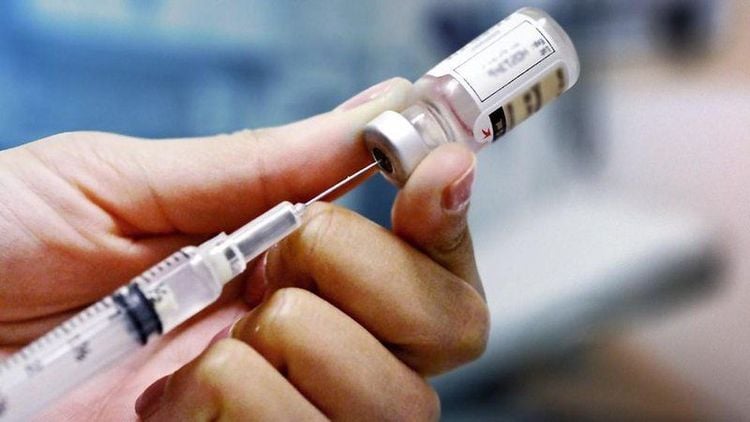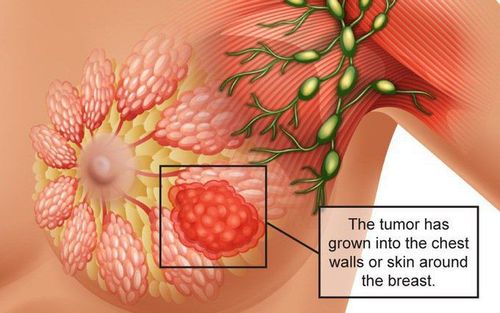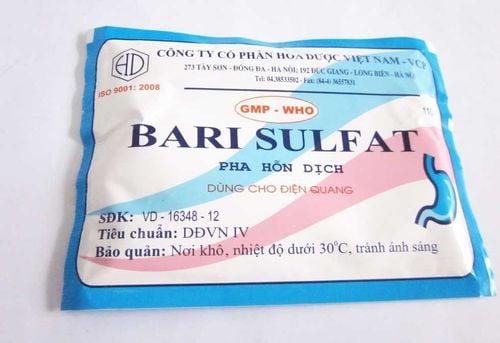This is an automatically translated article.
The article is professionally consulted by Master, Doctor Ton Nu Tra My - Department of Diagnostic Imaging - Vinmec Central Park International General Hospital.Breast magnetic resonance imaging or breast MRI is an imaging technique used to detect breast cancer and other abnormalities in the breast. A breast MRI is usually done when the doctor needs more information about the extent of the disease that other imaging methods such as mammograms (mammograms) and ultrasound of the breast do not respond to, or when a breast MRI is used. used to screen for breast cancer in women at high risk for breast cancer.
1. Designation
Breast cancer screening in high-risk women Assess the extent of breast cancer spread before treatment Evaluate abnormalities that are difficult to identify on mammograms. Evaluation of follow-up after treatment and response to treatment Evaluation of breast implant rupture.
Bệnh nhân được bơm thuốc cản quang vào cánh tay để thấy hình ảnh rõ hơn khi chụp
2. Contraindications
2.1. Absolute contraindications Contraindications related to magnetic resonance imaging: implantation of metal-based electronic devices such as pacemakers, anti-vibration machines, cochlear electrodes, automatic subcutaneous continuous injection machines, the means of fixing the bone with metal intracranial, eye socket, blood vessels < 6 months, metal foreign body in the chest, severe disease condition requires emergency resuscitation equipment for monitoring and treatment. Contraindications related to contrast agents: renal failure with glomerular filtration rate < 30 mL/min, pregnancy or lactation 2.2. Relative contraindications Metal surgical facilities > 6 months Phonophobia, claustrophobia, fear of loneliness
Chỉ định chụp cộng hưởng từ khi bệnh nhân cảm thấy những bất thường về tuyến vú
3. Mammography procedure with injection of magnetic contrast agent
3.1 Preparation before proceeding Performer: radiologist and radiologist specialized in imaging. Equipment: resonator 1.5 Tesla or larger Medicine: can be used to support sedation in cases of patients with fear of the dark, claustrophobia. Patient: can have a light meal, it is not necessary to fast before the scan. Instructions and explanations of what needs to be done before filming begins. Patient removes contraindicated items. 3.2. Steps to conduct breast magnetic resonance imaging with magnetic contrast injection 3.2.1 Patient's positionLying supine on the magnetic resonance imaging table Positioning the signal receiver Adjusting the table to the sewing cavity and positioning the chest area need to investigate Adjust the controller to capture breathing, reduce image noise 3.2.2. Pulse sequences prior to contrast injection from
Initial localization. The sequence of T1W pulses in the horizontal plane to take a wide field of view includes: ganglion fossa, supraclavicular and anterior chest wall muscle. T2W pulse sequence with transverse fat removal. T1W pulse sequence with transverse fat removal. Diffusion B800 – B1000 Diffusion Pulse Imaging. 3.2.3. Pulse sequences after injection of magnetic contrast agent
Dynamic pulse sequence: T1W pulse sequence with fat removal after injection of magnetic contrast at a dose of 0.1 Gadolinium/kg body weight, injection rate of 2ml/sec at different times point 1 min, 2 min, 3 min, 4 min, 5 min in cross-sectional plane. The sequence of T1W pulses is delayed in the vertical plane. Average curve plotting to evaluate drug elimination kinetics at the lesion site 3.3. Reading results of mammogram with contrast injection The x-ray must meet the requirements of clearly showing anatomical structures: glandular parenchyma, anterior and posterior fat layer, nipple, skin, parenchyma chest, axillary fossa and supraclavicular region. Determine whether there is a lesion, mass, cystic lesion, structural disorder, thickened skin, retraction, degree of infiltration into adjacent structures such as chest wall muscle. Investigate groups of lymph nodes. Assess the enhancement kinetics of the lesion site: whether the lesion is enhancing. Progressive, plateau, or excretory infiltration. Making conclusions on classification of BIRADS A doctor specializing in radiology is the person who reads the lesion, describes it on a computer that stores the film and makes a conclusion whether the next injection of contrast material is needed or not Print the film and diagnostic results More expert advice on results and recommendations for testing if needed
4. Follow-up during and after magnetic resonance imaging
During magnetic resonance imaging, closely monitor vital signs (pulse, blood pressure, breathing rate), consciousness and focal neurological signs of the patient.5. Complications and treatment direction
Some patients with agoraphobia, loneliness or claustrophobia may be fearful and agitated. The technician or doctor needs to guide and encourage the patient to comfort or use sedatives in case of indication.For complications related to contrast-enhanced drugs, it is necessary to recognize them early to diagnose and manage complications of contrast-enhanced injection.
Vinmec International General Hospital is one of the hospitals that not only ensures professional quality with a team of leading medical doctors, modern equipment and technology, but also stands out for its examination and consultation services. comprehensive and professional medical consultation and treatment; civilized, polite, safe and sterile medical examination and treatment space. Customers when choosing to perform tests here can be completely assured of the accuracy of test results.














